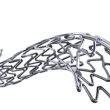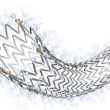Courtesy of Dr. Carlos Fava. The treatment of vein graft lesions has always been difficult in relation to angioplasty, due to their characteristics. While drug-eluting stents (DES) have proven to be superior to bare-metal stents (BMS) for coronary arteries, such superiority is unclear as regards vein grafts. Several studies with first-generation DES (DES1) have even reported<a href="https://solaci.org/en/2017/05/24/second-generation-des-present-lower-mortality-rates-for-vein-grafts/" title="Read more" >...</a>
Successful CTO: associated to higher survival rate?
Courtesy of Dr. Carlos Fava. The presence of chronic total occlusions (CTO) in coronary angiograms varies between 5% and 30%, depending of the different analyzis. Likewise, they have been associated to higher mortality rate and the need for myocardial revascularization surgery. The frequency of CTO PCI is low across the different series (3.8%), though<a href="https://solaci.org/en/2017/05/16/successful-cto-associated-to-higher-survival-rate/" title="Read more" >...</a>
Promising Outcomes of Overlapping Stents in Patients Undergoing Bioresorbable Scaffold (BRS) Implantation
Courtesy of Dr. Guillermo Migliaro. In regular clinical practice, overlapping stents are reported in up to 30% of patients undergoing coronary angioplasty, especially due to very long lesions requiring implantation of multiple stents or dissection after the implantation of a first stent. In bare metal stent era, overlapping was associated with unfavorable clinical outcomes<a href="https://solaci.org/en/2017/05/08/promising-outcomes-of-overlapping-stents-in-patients-undergoing-bioresorbable-scaffold-brs-implantation/" title="Read more" >...</a>
Bioresorbable scaffolds with drug-eluting stents: do they entail a higher thrombosis risk?
Courtesy of Dr. Leiva. Bioresorbable scaffolds with drug-eluting stents (bioresorbable vascular scaffolds, BVS) have been added to the list of endovascular treatment options for coronary disease. The ABSORB III trial showed the non-inferiority of this stent type to everolimus-eluting metallic stents as regards target-lesion revascularization (TLR) at one year. However, reports have suggested a higher<a href="https://solaci.org/en/2017/04/21/bioresorbable-scaffolds-with-drug-eluting-stents-do-they-entail-a-higher-thrombosis-risk/" title="Read more" >...</a>
Cardiovascular MR Perfusion Imaging: Good Initial Alternative in Stable Chronic Angina
In the initial management of patients with stable chronic angina, a non-invasive strategy with cardiovascular MR perfusion imaging seems to provide similar results to invasive strategies. At one year, MACE rate (combination of all cause death, non-fatal infarction and target vessel revascularization) resulted 3.3% for MRI vs. 3.9% for fractional flow reserve (FFR) informed<a href="https://solaci.org/en/2017/04/12/cardiovascular-mr-perfusion-imaging-good-initial-alternative-in-stable-chronic-angina/" title="Read more" >...</a>
SYNERGY vs. XIENCE in Complex Real-World Patients
Courtesy of Dr. Guillermo Migliaro. Technological advancements in drug-eluting stents (DES) have shown significant improvement as regards the safety and efficacy of these devices. DES are considered to be the golden standard for the treatment of percutaneous coronary interventions. DES with permanent or durable polymers (DP) have been associated with local inflammatory reactions and<a href="https://solaci.org/en/2017/04/01/synergy-vs-xience-in-complex-real-world-patients/" title="Read more" >...</a>
Incomplete Revascularization: Increased Events Rate in Non-Cardiac Surgery?
The aim of this study was to determine whether incomplete revascularization is associated to higher adverse events risk and acute myocardial infarction in patients undergoing non-cardiac surgery. Coronary artery disease patients or patients with prior PCI often have non cardiac surgery. These patients may have had all obstructions treated before surgery (complete revascularization) or<a href="https://solaci.org/en/2017/03/13/incomplete-revascularization-increased-events-rate-in-non-cardiac-surgery/" title="Read more" >...</a>
Double Kissing Crush vs. Provisional Stenting at 5 Years
Courtesy of Dr. Guillermo Migliaro. The Provisional Stenting technique (PS) consists of sequentially placing a stent in the main branch of the bifurcation and, only when faced with a suboptimal outcome (such as < 3 TIMI flow, flow limiting dissection or high residual stenosis), a second stent in the side branch. Several studies have shown<a href="https://solaci.org/en/2017/02/21/double-kissing-crush-vs-provisional-stenting-at-5-years/" title="Read more" >...</a>
New Generation of DES already being tested, so far safe
This study evaluated the safety and efficacy of the new drug eluting stents (Medtronic, Santa Rosa, California) to treat de novo coronary lesions. These new polymer free drug filled stents have the potential to improve clinical outcomes and allow a shorter dual antiplatelet therapy. In addition, they have been made with three layers of continuous<a href="https://solaci.org/en/2017/02/21/new-generation-of-des-already-being-tested-so-far-safe/" title="Read more" >...</a>
New Technique to Calculate CT-Derived Fractional Flow Reserve: Is It Accurate?
This study describes the accuracy of the new computed tomography (CT) technique to calculate fractional flow reserve (FFR). Other CT techniques to measure FFR use allometric scaling and assume coronary microvascular resistance. However, instead of assuming these parameters, this new technique calculates them based on coronary and aorta lumen deformation. The accuracy of this<a href="https://solaci.org/en/2017/01/20/new-technique-to-calculate-ct-derived-fractional-flow-reserve-is-it-accurate/" title="Read more" >...</a>









